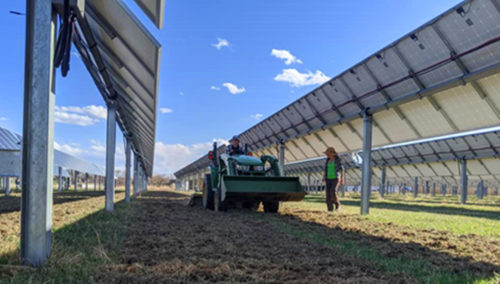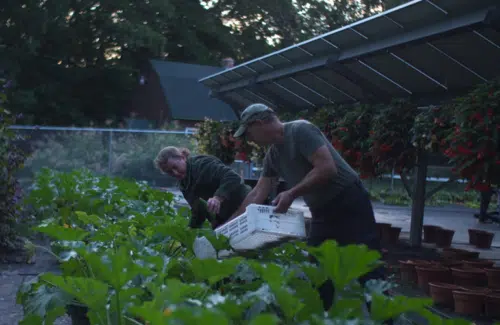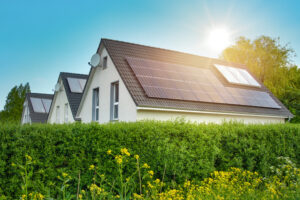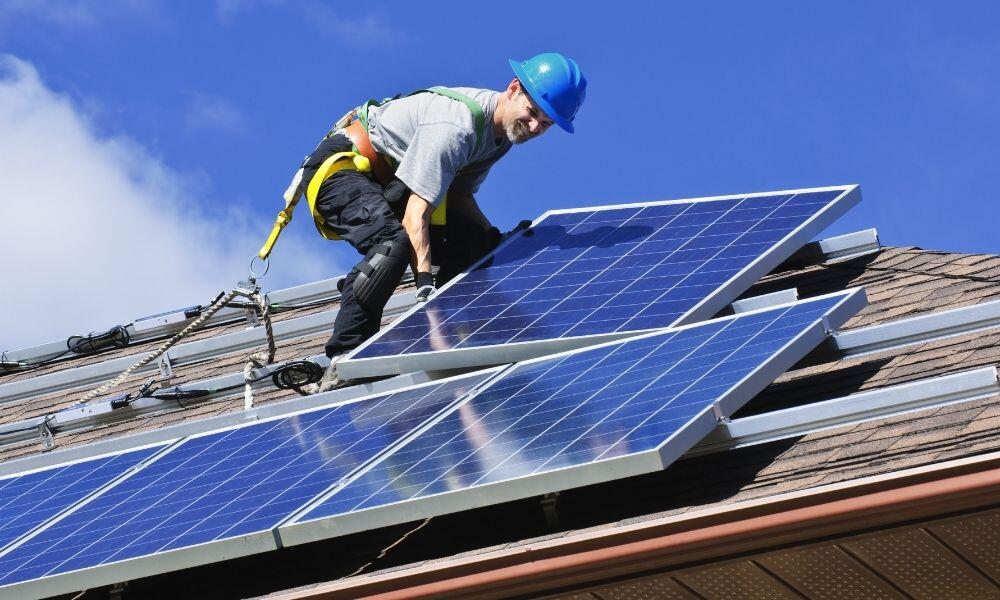Preserving American farmland through solar
Solar and farming can successfully cohabitate.
By SPW |
By Geoff Sparrow
Solar and farming have more in common than many people realize, and they can uplift each other in unexpected ways. The two industries currently have an unprecedented opportunity to work together to alleviate some of their most pressing issues.

Sprout City Farms, a nonprofit farming organization responsible for managing the crop production underneath the solar arrays at Jack’s Solar Garden in Colorado, doing an initial tilling underneath the solar panels.
One of these issues is where developers can site the commercial-scale solar that we must deploy to mitigate climate change and meet our country’s clean-energy goals. Locally sited, commercial-scale solar, which includes community solar, has the advantage of bringing entire communities the benefits of solar energy — cleaner air, economic stimulation and energy independence, to name a few.
Farmers and rural communities stand to benefit significantly from local solar. For that to happen, solar developers need to ensure these communities are aware of the benefits. We need to show how solar can help address some of the most serious challenges faced by today’s farmers and their communities.
Farming has always been a volatile business, and climate change is only exacerbating that reality. Increasing severe and unpredictable weather has made it even more difficult to keep family farms operating and rural communities thriving.
Solar can help with that.
Addressing community concerns
Commercial-scale solar isn’t prevalent enough that people are familiar with these projects, and they often lack an understanding of their advantages.

Byron Kominek, owner of Jack’s Solar Garden, rides his family’s tractor through their solar power system. Photo by NREL
Because prime farmland tends to be situated along main travel corridors, solar projects sited on farms are usually visible from roads. That may lead community members to oppose the projects if they consider them an eyesore. In addition, they may have the common misconception that solar farms will displace actual farms and prevent them from being available for farming in the future.
As developers, we have the opportunity to reverse these misconceptions. To do that, it’s key for developers to engage communities in discussion and education. That means inviting the community to voice their questions and concerns and then making an authentic effort to listen to, understand and address those concerns.
Asking farmers directly about their biggest challenges can pave the way for solar developers to show how effectively solar can address those challenges. In fact, solar can provide a straightforward, holistic solution to multiple issues that farmers are facing: crop production, energy operating costs and revenue streams.
Benefits of solar for farms and rural communities
Sunshine is like another crop that farmers can harvest — one that can pay more than hay.
That payment comes in the form of land lease payments for solar projects, which provide farmers with a guaranteed, consistent revenue stream. This revenue stream has several advantages for farmers: it adds to their farming revenue, takes no extra work or investment and is 100% profit. The rates for the term of the lease are set when the farmer enters into the agreement with the solar project developer, providing them a predictable, long-term income stream — unlike crops, whose future prices are unknown. Solar installations can also offset energy expenses for farmers.

Credit: AgriSolar Clearinghouse
Adding solar as a crop may even provide enough extra income to keep a farm operating — and keep it in the family.
The surrounding community can also benefit materially from the economic stimulation that solar installations bring, with local jobs, increased economic activity and long-term tax revenues. In the case of community solar installations, residents and local businesses also gain access to electricity bill savings.
It’s important for developers to emphasize to farming communities that when a solar project is built on a farm, the farmer still owns the land. At the end of the project’s life cycle, the farm can resume normal operations.
The conditions for those normal operations will even be improved. In locations where a solar project is deployed in place of crops, the land where it is installed will not be farmed for at least 20 years. Pausing the constant tilling of the soil — which releases carbon into the atmosphere and destroys the microorganisms in the ground — regenerates the soil. After the solar array is decommissioned, the land can be restored to prime farmland, with significantly improved soils and increased crop productivity.
But crop production doesn’t necessarily need to pause when solar is installed. More farms are now co-locating solar panels, livestock grazing and crops, in a practice known as agrivoltaics. While still in its infancy, agrivoltaics greatly benefits farms and their surrounding communities.

Credit: Green Development
Many crops, such as lettuce, peppers and tomatoes, do better with the intermittent shade from solar panels, resulting in higher crop yields. Studies are being conducted across the United States to determine which crops thrive with solar panels. The shade from the panels also reduces a farm’s water use. This benefit is especially welcome in a state like California, which has some of the country’s prime agricultural land and also been dealing with years of drought.
It’s becoming more common for solar farms to incorporate native grasses or pollinator-friendly plants with solar panels. Attracting pollinators can increase yields on farms with solar installations and even on neighboring farms, benefitting the larger community. Livestock grazing can also be combined with solar farms, helping maintain the vegetation while providing some shade for the animals.
When farmers and their communities get the facts about solar, they can readily see its many benefits. Learning about those benefits can shift rural communities from seeing solar as a threat to seeing it as a way to preserve American farmland. As solar developers, it’s up to us to spread the word that solar is a win-win-win for farms, rural communities, and our country as a whole.




